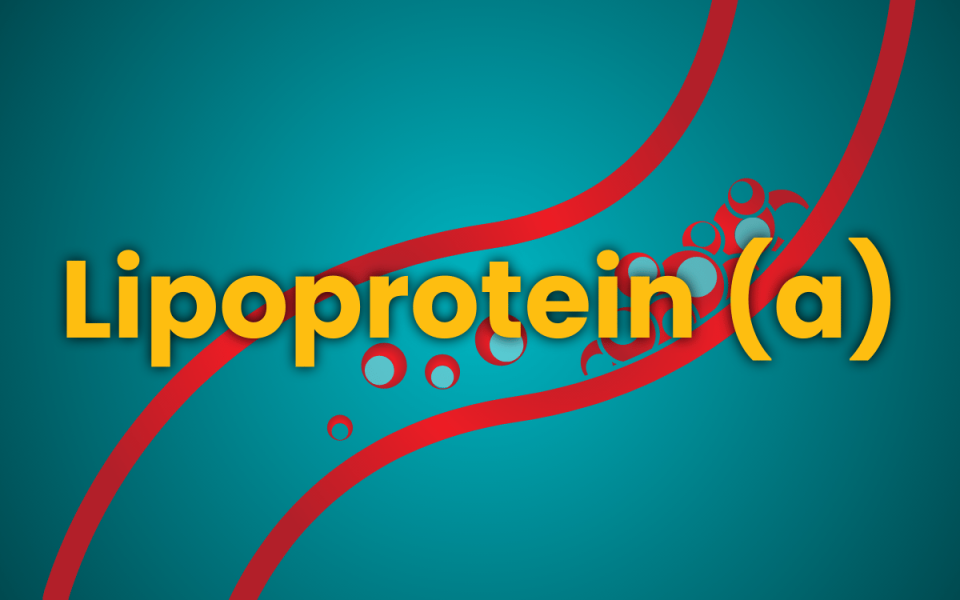Elevated Lipoprotein(a): Causes, Risks, and Management Strategies

Why did the dad name his cat Lipid? Because it shuns water and if it ran around in the bloodstream it would be detrimental to your health. (Sorry, but the authors are a new and an old dad and we can’t help ourselves.)
Lipid is a medical term that refers to fats that circulate in our bodies and have functions in cells. Think about cooking oil - a fat similar to lipids - and our blood, which is very watery. Having oily lipids loose in the bloodstream can lead to myriad problems. Lipids, or fats, are critically important to the running of a functional body, and we need them delivered all over, using the bloodstream. In order to declaw these water-hating, critical lipids in the bloodstream, we need to package them up into a nice safe box - just like a cat going to the vet. How do we solve the fat/water problem in our blood? Apolipoproteins come to the rescue. Lipo- refers to the aforementioned lipids, and -protein refers to proteins. Together these form a complex, and the apo- at the front specifies that we’re talking about the protein part of that complex. These proteins surround the fatty lipids and make a nice, safe package that’s part lipid and part protein called a lipoprotein; made of cholesterol carried in apolipoproteins. Along with providing structure to the lipoprotein, they help form a special membrane to keep the lipids inside, signal other molecules to tell them what the lipoprotein contains, guide the metabolism of lipids, and help keep our bloodstream safe with the lipoproteins. Well, not purrfectly safe. A good package is high-density lipoprotein (HDL), a bad package is low-density lipoprotein (LDL), but even more dangerous is lipoprotein (a) or lipoprotein little-a and abbreviated Lp(a). Clinical trials helped find medications like statins to lower LDL, but these have little effect on Lp(a), so current clinical trials are studying ways to lower levels of this really, really, really, really bad cholesterol as well as the health effects of reducing Lp(a).
High Lp(a) levels are dangerous, and unfortunately hard to control. Your risk of having high Lp(a) is genetically determined, though some medical and environmental conditions can affect Lp(a) levels. Apo(a), the apolipoprotein that creates Lp(a), is a long, chain-like protein. Different people can have different sized chains, called different isoforms, which may be bigger or smaller. According to Dr. Michael J Koren, M.D. and Dr. Albert Lopez, DO, the smaller isoforms tend to be more numerous and dangerous. What determines the size of the isoform? Our genes! Our genetic code directly determines the size of our Apo(a) apolipoprotein and the concentration of Lp(a) in the blood! These genes barely change over generations so people with similar racial/ethnic backgrounds have a higher chance of similar Lp(a) levels. Those of African and South Asian descent tend to have higher Lp(a) levels than those of White or East Asian descent.
So why are high levels of Apo(a)/Lp(a) dangerous? There are three major complications from the bad cholesterols LDL and Lp(a). High levels of bad cholesterol increases plaques in the bloodstream (pro-atherogenic), leads to blood clots (pro-thrombotic), and promotes inflammation (pro-inflammatory). The end result is an increased chance of heart attack, stroke, and similar conditions. Levels of bad LDL cholesterol are kept in check by LDL receptors in the liver, but Lp(a) does not get cleared by LDL receptors.
This means elevated Lp(a) can be very hard to manage. Since levels are genetically determined, diet and exercise don’t have much effect on Lp(a) levels, though they can have a great effect on mitigating complications. Additionally, typical LDL-lowering cholesterol medications like statins have little effect on Lp(a). PCSK9 inhibitors are a class of medication that increases the systems that degrade LDL and may help to lower Lp(a) levels. Unfortunately, as of writing no medications have been FDA-approved for lowering Lp(a) levels and improving cardiovascular disease outcomes. However, research is ongoing to find safe and effective treatments for Lp(a) with some findings possible in the next year or so. Some of these investigational medications, called antisense oligonucleotides (ASOs) go to the source, stopping genetic code from producing excessive apo(a). Other investigational medications called small interfering RNA (siRNAs) break down mRNA molecules to prevent the assembly of Lp(a). This is an exciting space that has real promise for improvement to make our lives easier and more pleasant. Clinical research is the key to discovering how to lower blood levels of these dangerous, fatty, water-avoiding, lipoproteins. Call your local clinical research office or visit clinicaltrials.gov to find research opportunities for elevated Lp(a) and other conditions. Now if we could study how to make my cats enjoy taking a bath.
There’s more to the story when it comes to Lp(a), we have many intriguing podcasts, videos, and other articles on this really, really, really, really bad cholesterol. MedEvidence Web Link
Staff Writer / Editor Benton Lowey-Ball, BS, BFA
Co-Written by Dr. Michael J. Koren, MD
Click Below for ENCORE Research Group's Enrolling Studies
References
Cegla, J., France, M., Marcovina, S. M., & Neely, R. D. G. (2021). Lp (a): when and how to measure it. Annals of clinical biochemistry, 58(1), 16-21. https://journals.sagepub.com/doi/full/10.1177/0004563220968473
Feingold, K. R. (2024). Introduction to lipids and lipoproteins. Endotext [internet]. https://www.ncbi.nlm.nih.gov/books/NBK305896/
Koren, M.J. & Lopez, A. (Hosts). (2023). Two docs talk advanced lipids. [Podcast Episode]. In MedEvidence! Truth Behind the Data. MedEvidence. https://medevidence.com/two-docs-talk-advanced-lipids
Lampsas, S., Xenou, M., Oikonomou, E., Pantelidis, P., Lysandrou, A., Sarantos, S., ... & Siasos, G. (2023). Lipoprotein (a) in atherosclerotic diseases: from pathophysiology to diagnosis and treatment. Molecules, 28(3), 969. https://www.mdpi.com/1420-3049/28/3/969
Lau, F. D., & Giugliano, R. P. (2022). Lipoprotein (a) and its significance in cardiovascular disease: a review. JAMA cardiology, 7(7), 760-769. https://jamanetwork.com/journals/jamacardiology/article-abstract/2792280
Nie, J., Yang, J., Wei, Y., & Wei, X. (2020). The role of oxidized phospholipids in the development of disease. Molecular aspects of medicine, 76, 100909. https://doi.org/10.1016/j.mam.2020.100909
Reyes-Soffer, G., Ginsberg, H. N., Berglund, L., Duell, P. B., Heffron, S. P., Kamstrup, P. R., ... & Koschinsky, M.L. (2022). Lipoprotein (a): a genetically determined, causal, and prevalent risk factor for atherosclerotic cardiovascular disease: a scientific statement from the American Heart Association. Arteriosclerosis, Thrombosis, and vascular biology, 42(1), e48-e60. https://www.ahajournals.org/doi/full/10.1161/ATV.0000000000000147
Risman, R. A., Kirby, N. C., Bannish, B. E., Hudson, N. E., & Tutwiler, V. (2023). Fibrinolysis: an illustrated review. Research and Practice in Thrombosis and Haemostasis, 7(2), 100081. https://www.ncbi.nlm.nih.gov/pmc/articles/PMC10024051/
Schmidt, K., Noureen, A., Kronenberg, F., & Utermann, G. (2016). Structure, function, and genetics of lipoprotein (a). Journal of lipid research, 57(8), 1339-1359. https://doi.org/10.1194/jlr.R067314



